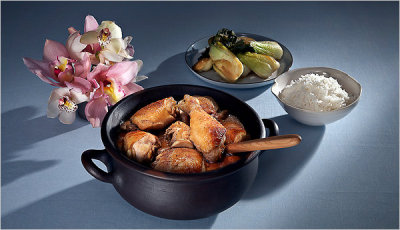There are as many recipes for adobo as there are Philippine islands, thats how NY Times food columnist Sam Sifton describe our favorite dish in his article The Adobo Experiment. He also writes,
There is great fun to be had in asking Filipinos how to make adobo, particularly when they are in groups. Filipino cooking is an evolutionary masterpiece, a cuisine that includes Chinese, Spanish, American and indigenous island influences, all rolled into one. But where for one Filipino the most important aspect of the dish is Spanish, for another it is Chinese, or both, or neither. (The journalist and food historian Raymond Sokolov has made the point that the ingredients for adobo were present in the Philippines before Magellan — only the name, which comes from a Spanish word for sauce, came later. “Lexical imperialism,” he called this process.)
Funny he added, husbands argue with wives about adobo. Friends shoot each other dirty looks... over disputes on how to cook adobo. In some families this may be true, but for me I just try to learn how other people cook their adobo and try to copy it myself in my attempt to create a signature adobo recipe that will leave a lasting impression to anyone who tastes it. For Pinoy's, I think one of the best compliment to receive is that you cook a very good adobo. I haven't reached that goal yet.
I prefer the soy-sauce based dish especially prepared with lots of crushed garlic and pork - like what my brother always prepare. And, there's the Tagalog or Taal's Adobo sa Dilaw that uses luyang dilaw or Yellow Tumeric. The dish always gives me good memories of my family and my younger days every time I prepare it. Adobo is always best served with steamy white rice and adobo tastes better if it's a day old or has been in and out of the refrigerator. Indeed, this is adobo. Every man is an island.
Yum!

Love this news! :D
ReplyDelete